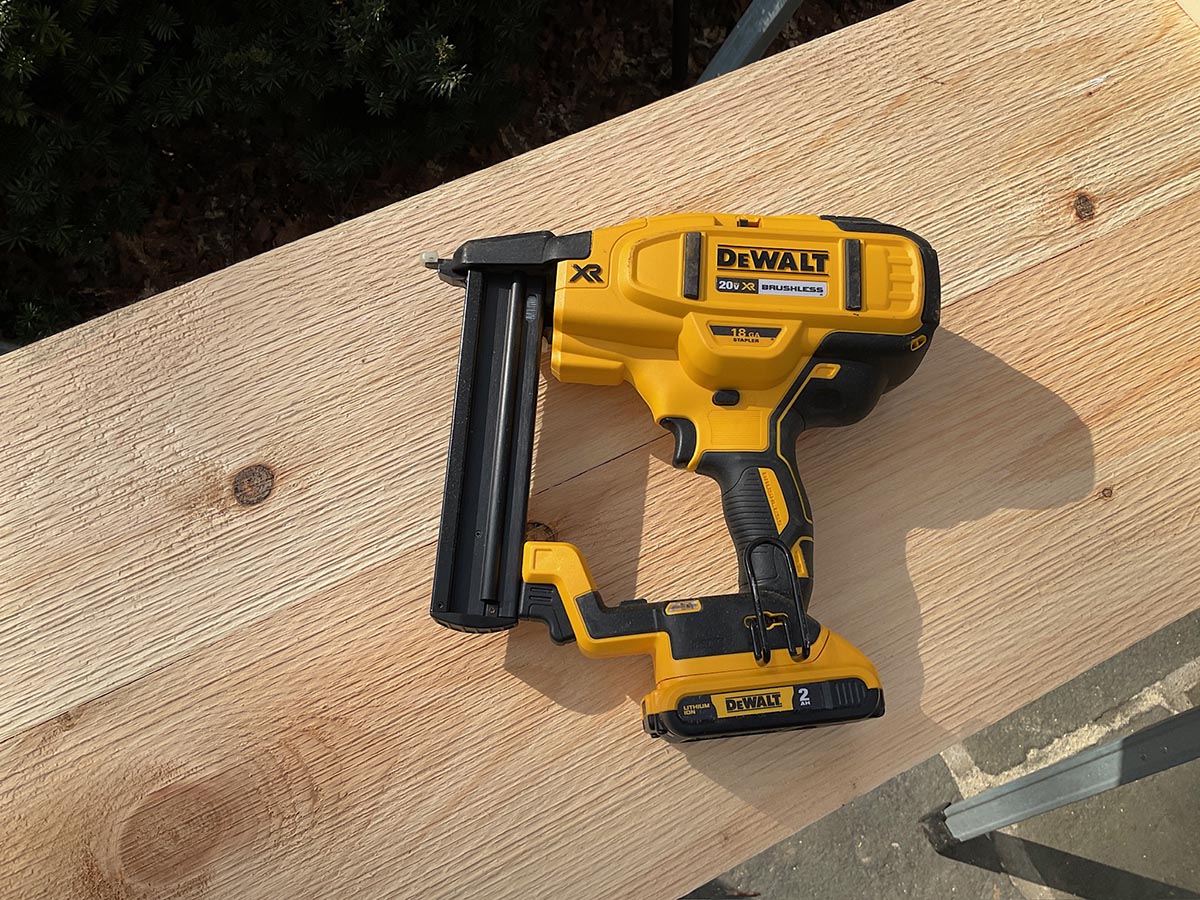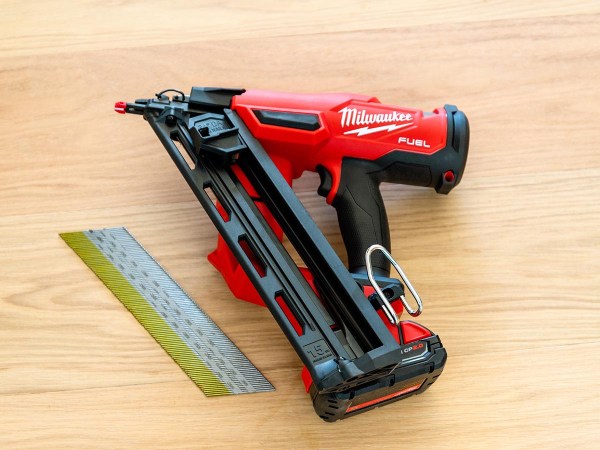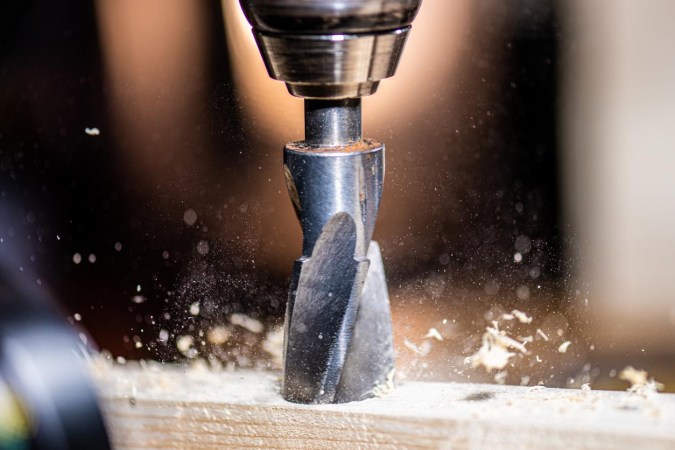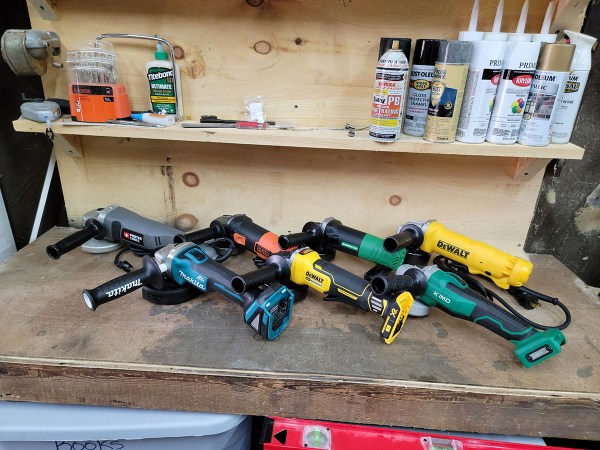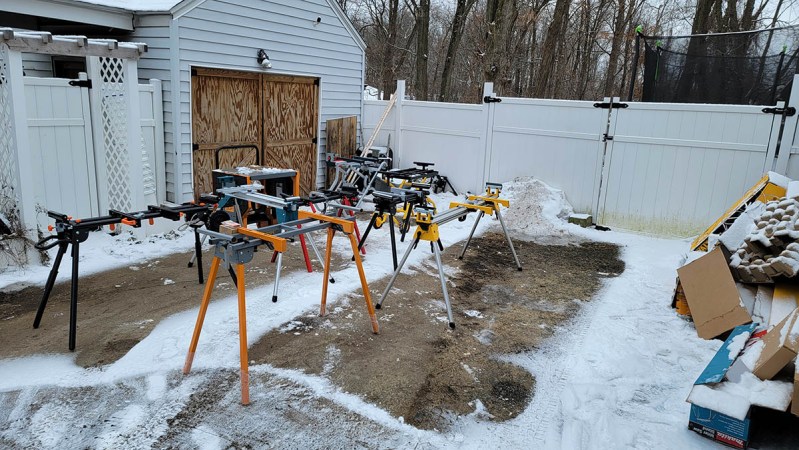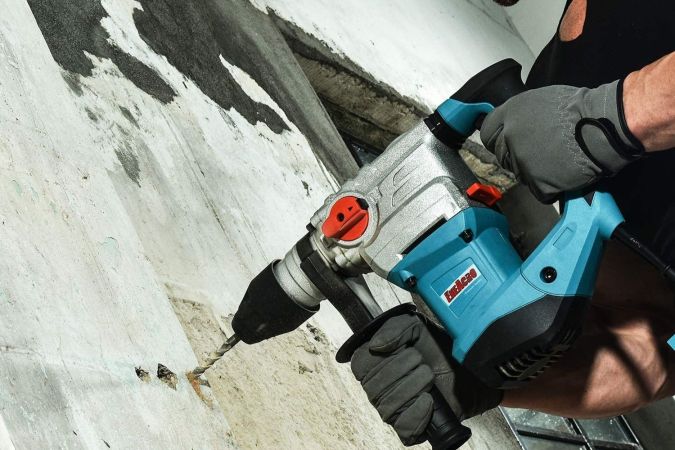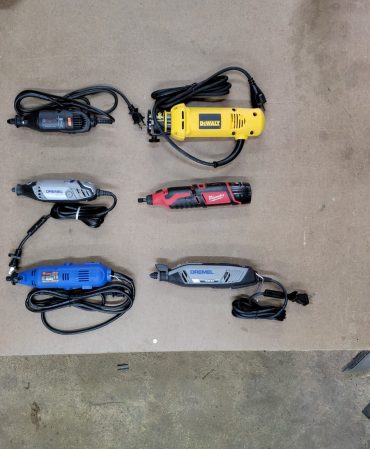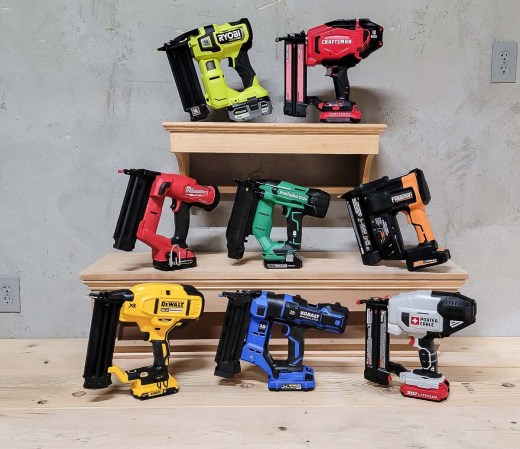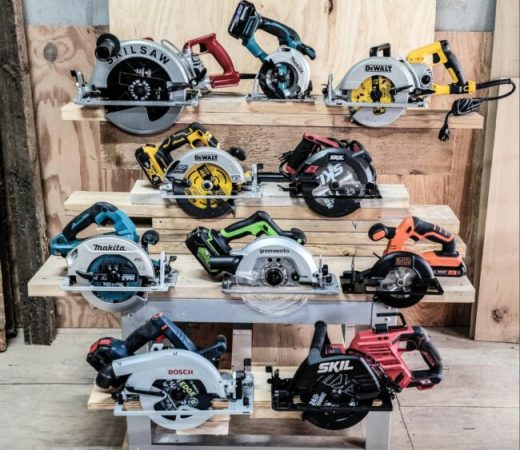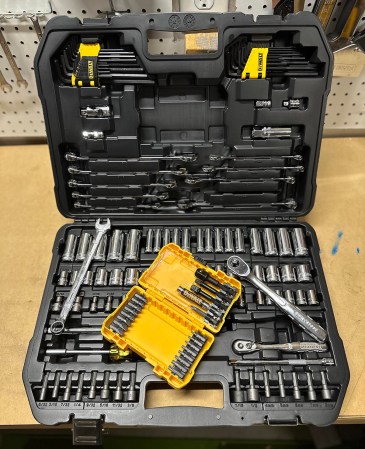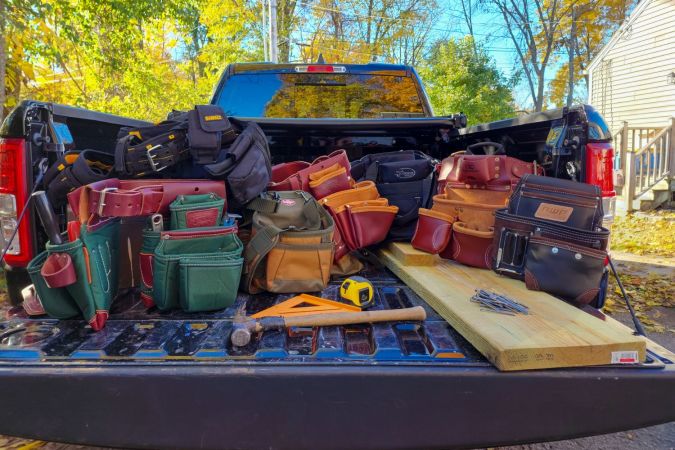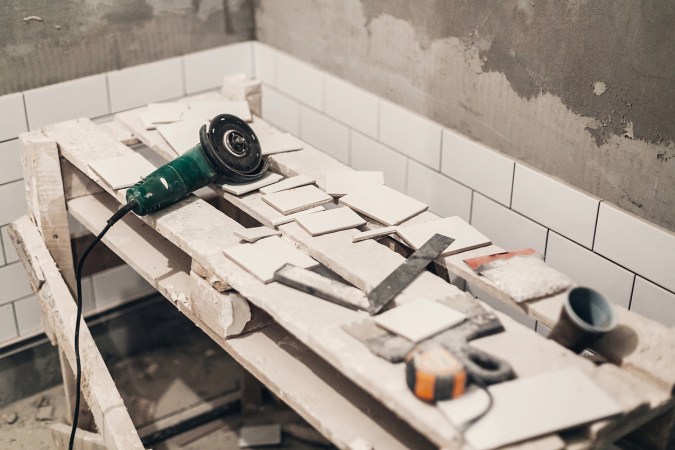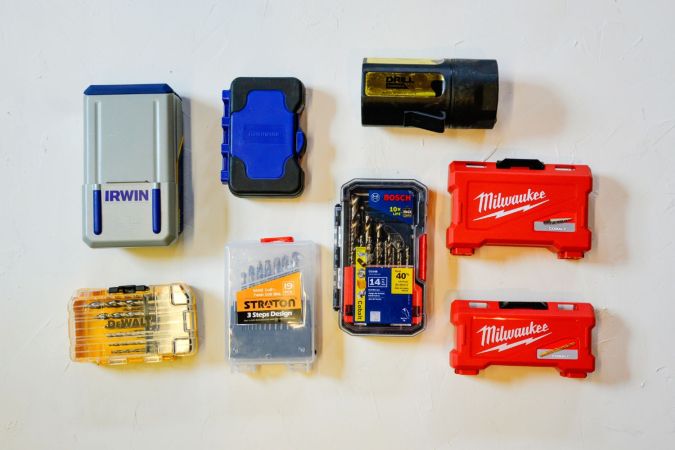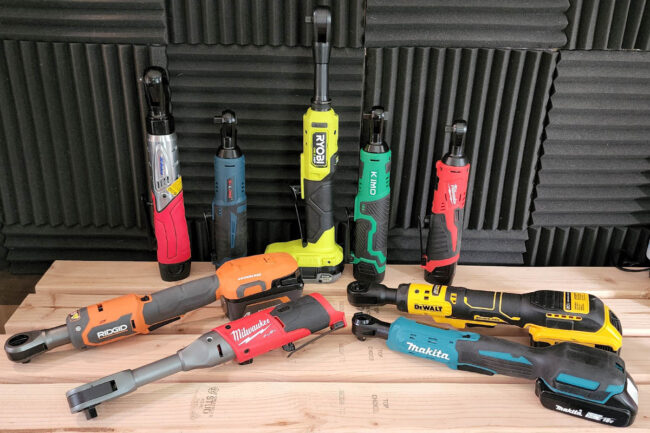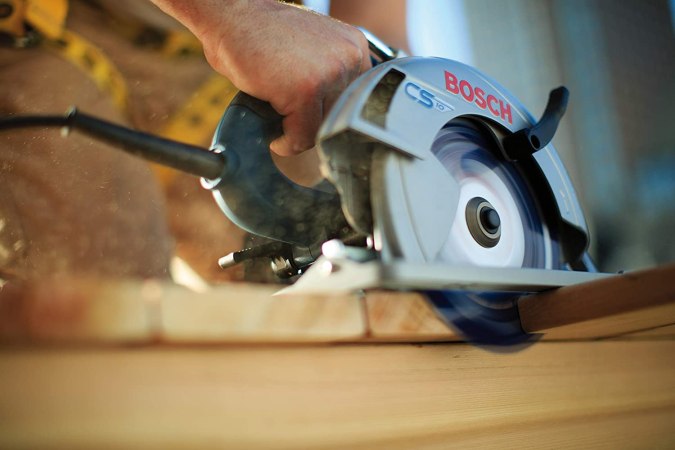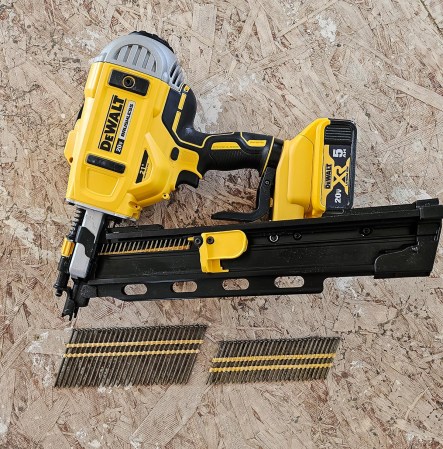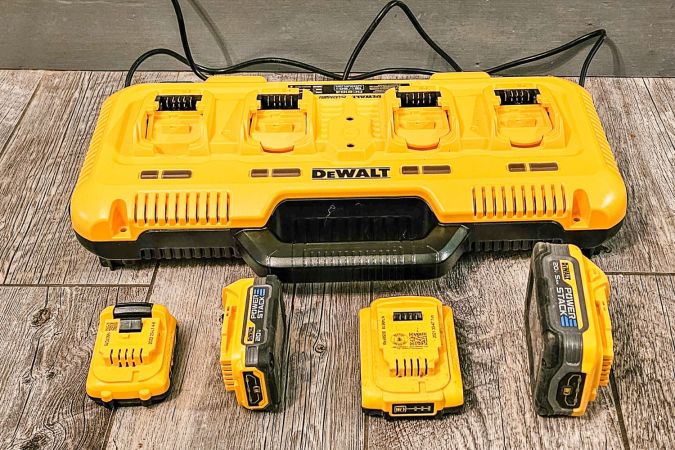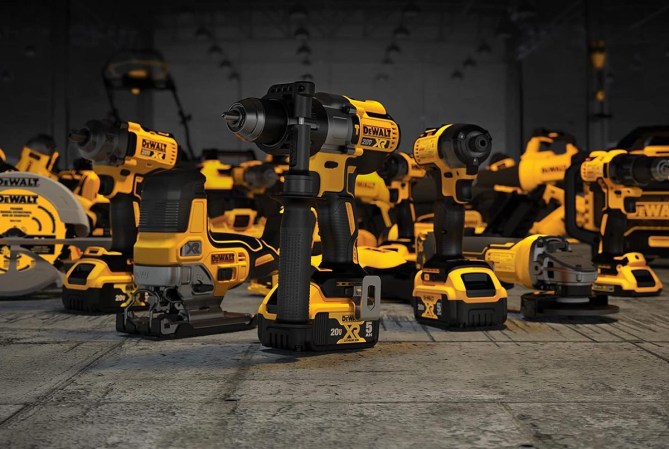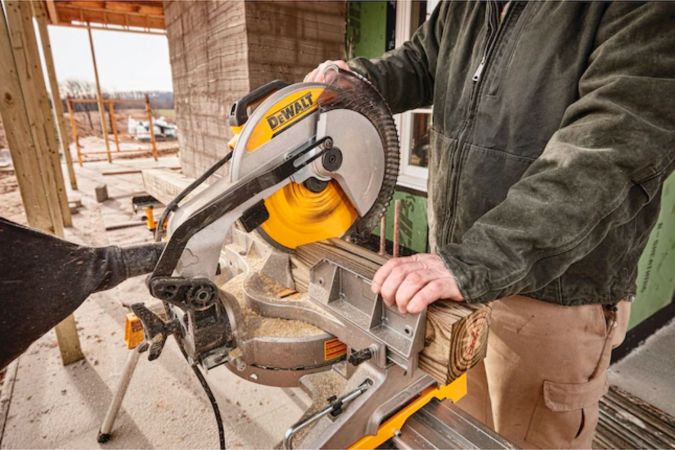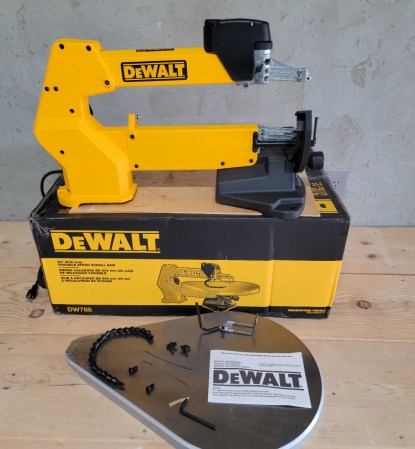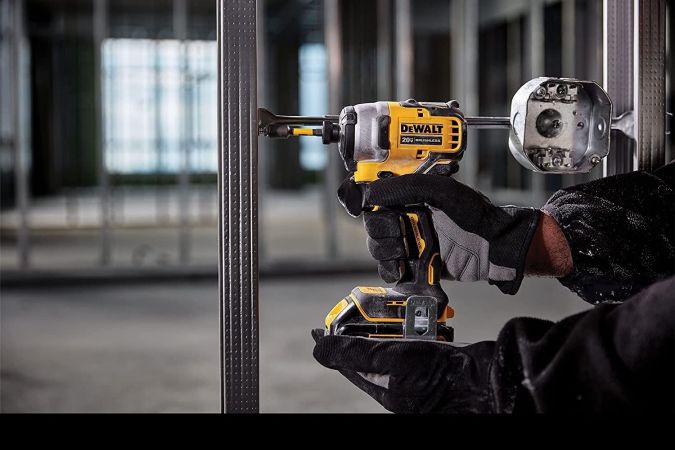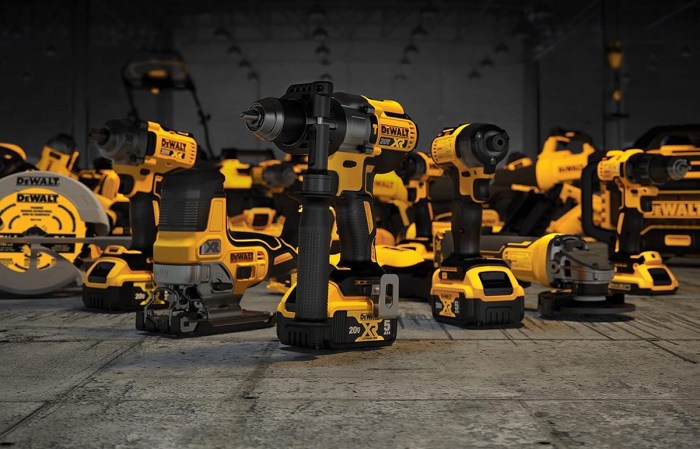We may earn revenue from the products available on this page and participate in affiliate programs. Learn More ›
We own a narrow crown stapler that gets a lot of use in our small woodworking and trim projects. This type of stapler is an indispensable tool, and the connections that the fasteners make are hard to beat. Narrow crown staplers are quite useful in projects ranging from building a compost bin to a barn door, and they often come in handy for our professional work, which includes fastening underlayment for new floors, applying trim to a custom shed, constructing porch column wraps, and trimming doors. We don’t use ours all the time on a trim project, but when we do use it, it’s because it’s the best tool for the job.
For this hands-on review, we tested one of the most popular narrow crown staplers on the market: DeWalt’s Max XR cordless narrow crown stapler. To put this narrow crown stapler to the test for both professional and DIY work, we shot staples in hardwood, softwood, and a composite material we use called Acre.
DeWalt 20V MAX XR Narrow Crown Stapler: At a Glance
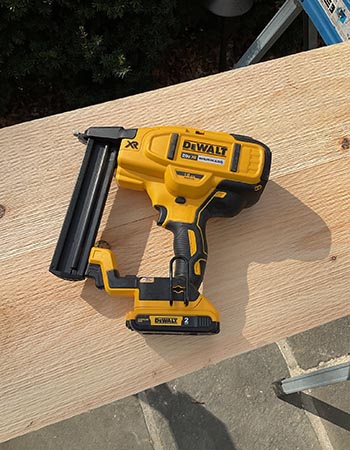
Rating: 6/10*
* We came to this rating by comparing the DeWalt to all the various types of narrow crown staplers. That being said, it is the best battery-powered narrow crown stapler we’ve tried.
SPECS
- Staple thickness: 18 gauge
- Staple crown width: ¼ inch
- Staple length: ½ inch to 1½ inches
- Maximum voltage: 20 volts
- Safety features: Dry-fire lockout, 3 anti-mar nose guards
- Weight: 5.7 pounds
- Additional features: Tool-free depth adjustment
PROS
- No hose, compressor, or cord is required for use
- Delivers good power for fastening into typical home improvement materials
- Dry-fire lockout feature prevents harm and protects material from accidental damage
- Solidly built tool durable enough to withstand wear and tear of jobsites
CONS
- Much heavier than a comparative pneumatic crown stapler tool
- Top-heavy design can feel cumbersome, especially when tired
- Large gap between staple aperture (where the staple comes out) and workpiece
- Hard to gauge relationship between no-mar tip and staple aperture
- Must be held very straight to countersink staple in hardwood
- Must flip tool upside down to reload staples
- Only 1 battery is included, so there’s some downtime while waiting for a charge
Get the DeWalt narrow crown stapler at:
- Ace Hardware for $299.00 (battery, charger, and case not included)
- The Home Depot for $386.85 (standard kit plus additional battery)
What is the DeWalt 20V MAX XR narrow crown stapler?
The DeWalt narrow crown stapler is a cordless, battery-operated tool designed for driving staples into cabinetry, trim, flooring underlayment, and other nonstructural applications around the house. Able to drive ½- to 1½-inch-long staples, it can be used on a variety of materials, including hardwood, trim materials like finger-joint primed pine, and sheet goods.
And there is no hose, gas, or compressor, so it’s easier to set up and carry than a pneumatic narrow crown stapler, which is a priority for our small DIY woodworking projects that are made with cut-offs and repurposed material from bigger jobs. The tool features a selectable trigger for sequential and bump-fire modes, which means users can dispense a staple with one trigger pull or by bumping the nose of the tool on the work. The kit ships with a single 2.0-amp-hour battery and is compatible with other DeWalt batteries.
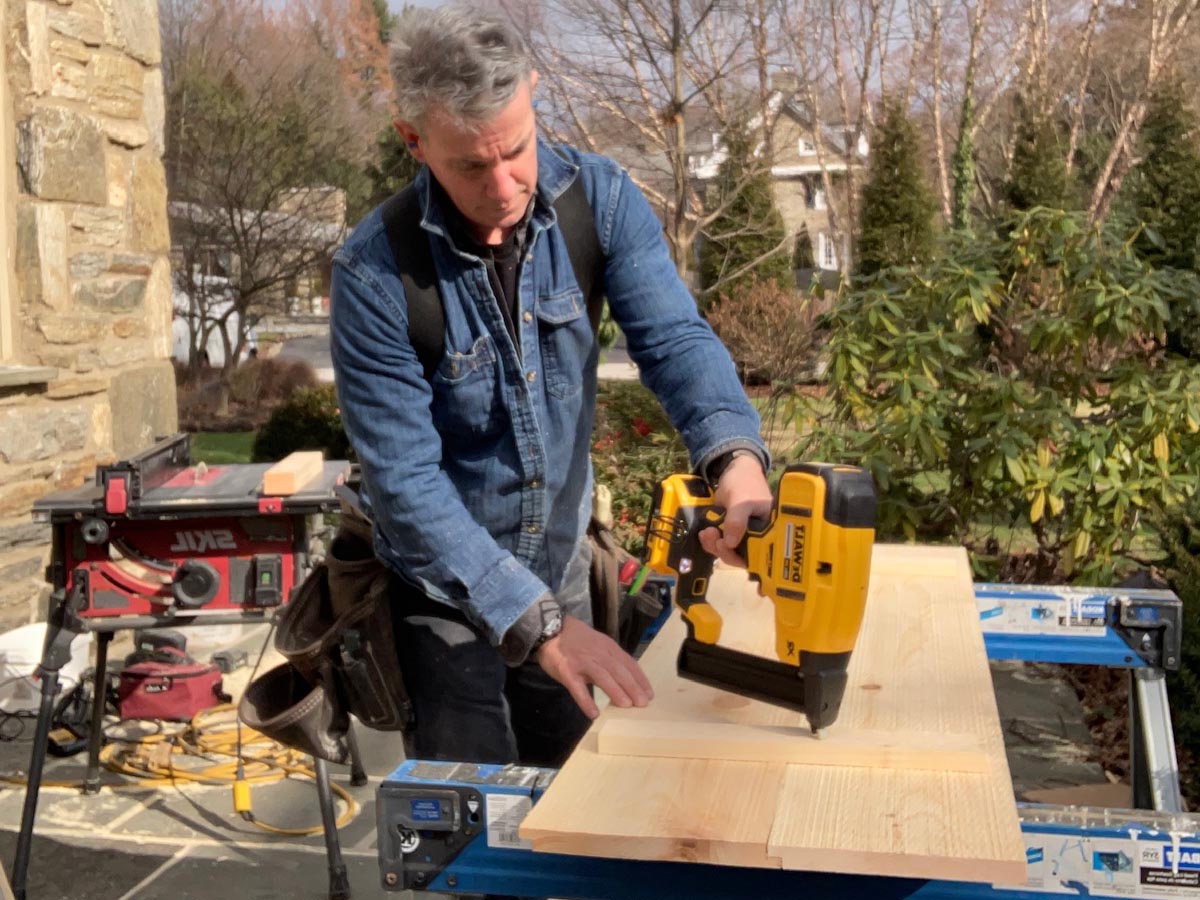
How does the DeWalt 20V narrow crown stapler perform?
The tool functions as claimed. In 99 percent of the applications we tried, the DeWalt narrow crown stapler worked. It shot and countersunk staples in all the materials we tested. The depth of drive adjustment worked nicely. The flywheel mechanism recovered really fast. It’s a million miles behind a bump-fire pneumatic tool, but it goes.
The no-mar rubber tips that have been included on finish nailers for a generation were pretty much throwaways then, but that’s not the case here. We removed the no-mar tip to get a better line of sight to the work, and the super-slim steel tip marred the softwood. End of the world? Hardly.
From a power perspective, when we shot hardwood (red oak), the tool needed to be perpendicular to the work to countersink the staple crown, and even then, it barely got beneath the surface. For comparison, we haven’t had much luck with other battery-powered staplers driving into hardwood. Still, hardwood applications are likely rare for this tool, so this is just an observation, not a criticism.
Weight and Visibility Limitations
Yes, there are trade-offs. One of them is that the weight that’s eliminated in not lugging a compressor and hose around is offset by the tool’s flywheel system—which works just as great as its finish nailer predecessor. But the extra weight on the stapler itself transforms what is typically a 2-pound, slim, super-balanced pneumatic tool into a bulky unit that’s 80 percent larger and much heavier. We found this to be an issue when fastening some assemblies together; it worked, but we had to work to make it work. It required way more effort than what we typically experience with a pneumatic unit.
Because a narrow crown stapler is sometimes a trim tool, one needs to be able to really see where the staple is coming out. With the no-mar tip on the DeWalt, it can be hard to see where that opening is. And with the ⅛-inch gap between the tip and where the staple actually comes out and the work, it’s even harder to see. It’s not impossible, but it’s harder. On the other hand, if your main goal is to fasten ¼-inch plywood for a subfloor application, these challenges are nonevents. A pneumatic bump-fire stapler is still many times faster than this unit for flooring applications.
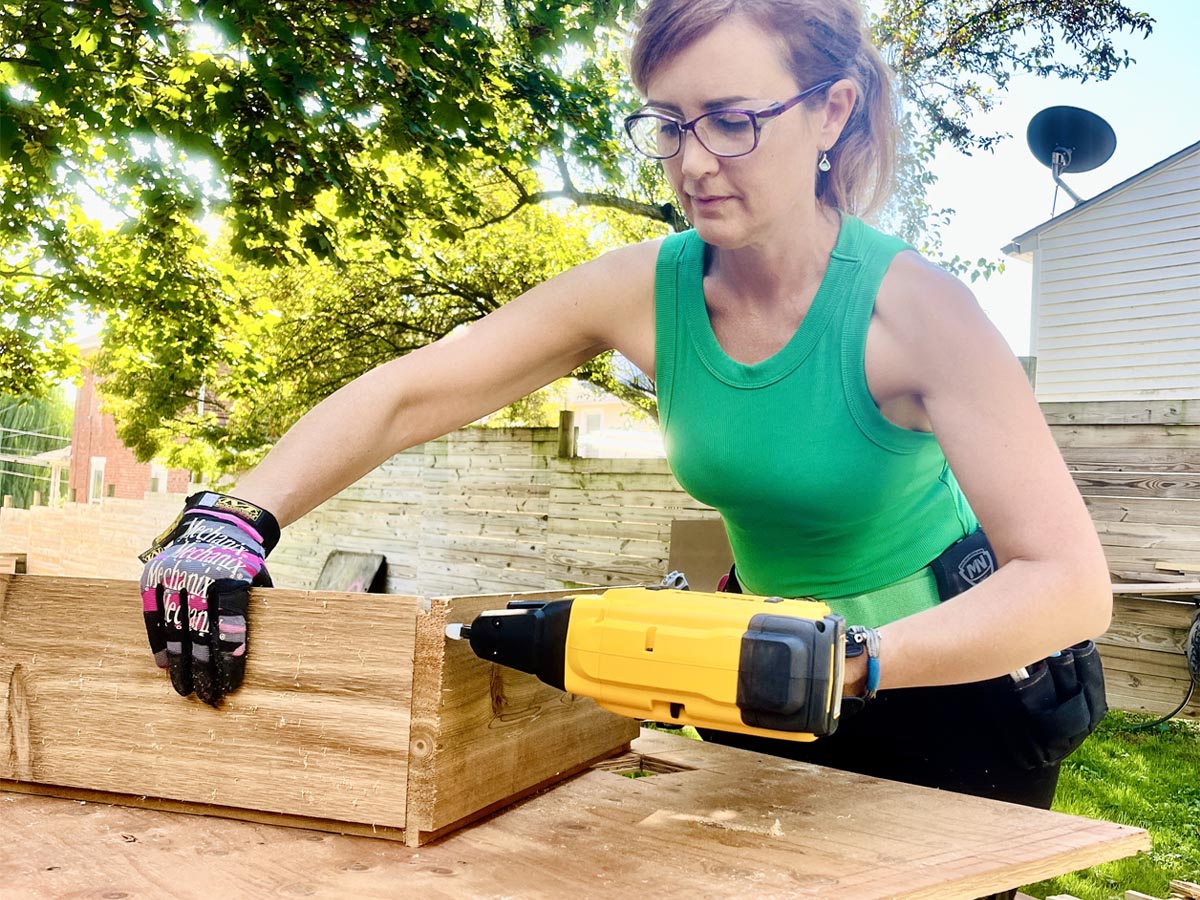
Is the DeWalt 20V narrow crown stapler right for you?
It depends. The appeal of a hoseless nailer is the removal of the compressor and hose. For Theresa, that’s a real win. For Mark, that’s not so much of a win since he carries tons on any given day. For the pro work he does, the precision he needs, and for the jobsites we have, this tool doesn’t solve any problems there. However, of the several offerings we’ve seen over the years, coincidentally, DeWalt’s cordless finish nailer is the only one we’d consider swapping out the compressor, hose, and guns for.
If small DIY projects are on your list, and you don’t want a compressor and hoses to deal with, this tool works well. It saves setup time and makes it easier to carry the tool to the jobsite, which means more can be accomplished in less time. Still, the tool’s weight can be an issue for some DIY users or in some applications.
As much as we applaud tool designers’ efforts to bring pneumatic fastening into the cordless realm, pneumatics remain our preferred method for stapling on most home improvement projects.
Where to Buy the DeWalt 20V MAX XR Narrow Crown Stapler
Get the DeWalt narrow crown stapler at:
- Ace Hardware for $299.00 (battery, charger, and case not included)
- The Home Depot for $386.85 (standard kit plus additional battery)
Meet the Testers
From his early days in marine construction; tree work; and high-rise scaffolding to decks, basements, and trim; Mark Clement has been a pro carpenter for more than 30 years. He was the editor for Tools of the Trade, a content producer for The Journal of Light Construction and Fine Homebuilding, contributor and carpenter on TV shows, and presenter of live building clinics at The International Builders’ Show and JLC Live!
Theresa Clement is a handy designer who has been improving homes for more than 20 years. Starting with her work at architecture firms, she has authored books; writes for Architect magazine, JLC magazine, and Remodeling magazine; and worked as a design producer on makeover shows, and now works with her carpenter husband on private homes and their home improvement brand MyFixitUpLife.

